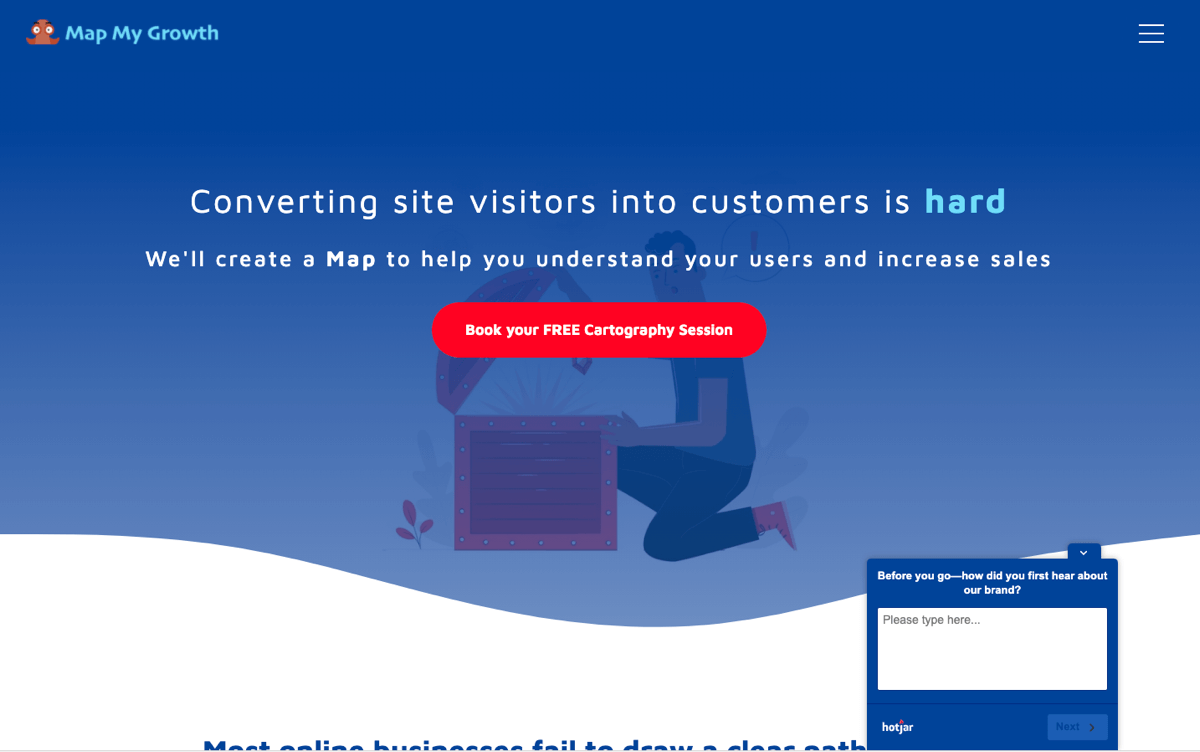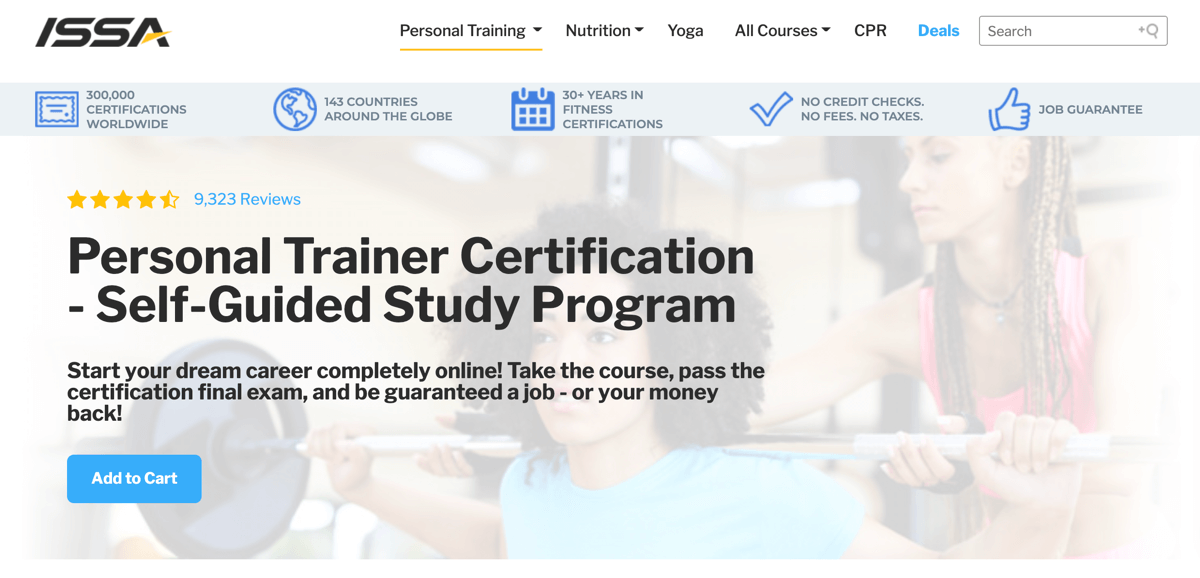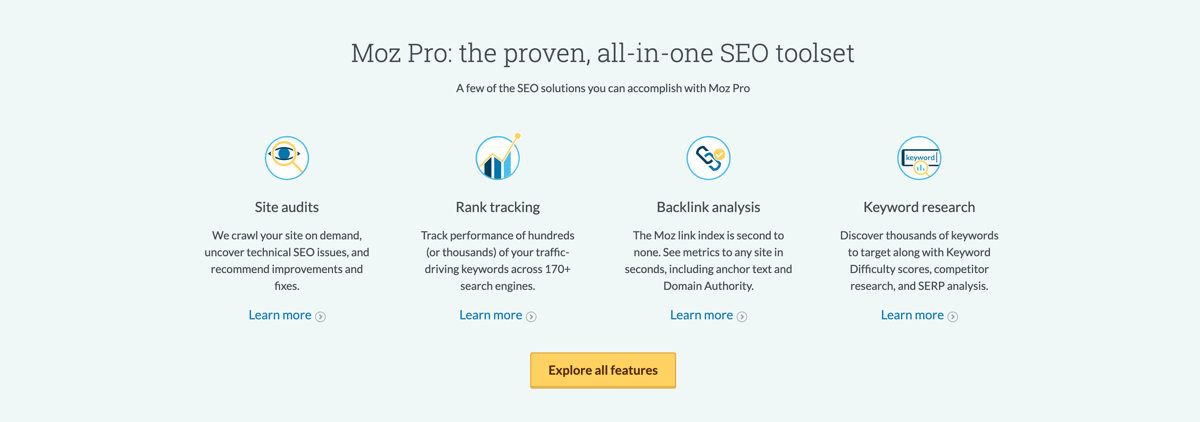Website traffic data isn’t enough—when Google Analytics can’t help you
Over 55% of websites use Google Analytics to track visitors and provide essential traffic information, such as demographics, channels, landing pages, or conversion rates. All digital marketers need to know these basic statistics in order to optimize the site experience and ultimately drive more sales.
However, the era of treating users as a reflection of numbers and figures is (luckily) long gone. Nowadays, understanding people (not data points!) coming to your site is what dictates SEO campaigns and what results in better SERP ranking positions, since over the last years Google has introduced numerous EAT algorithms and guidelines to follow, in order to promote helpful content.
Why should you care about all this, even though SEO isn’t your primary focus? Because what happens off-site (search intent) will affect the on-site experience (conversion), including who lands on your website.
In other words, without understanding the “why” and “how” behind those neat analytics numbers, you can’t offer valuable content to your website visitors—the type of content that’ll encourage them to stay, browse, and convert.
3 things you need to know about your website visitors
Obviously, the more you know about your website visitors, the better. However, we decided to focus on the top 3 aspects that every business selling products or services online should understand about their target audience. What were the criteria for choosing them? Experience.
Seeing tens of big and small companies failing to grasp these concepts and then increasing their sales by optimizing their websites based on focused user research.
1. How people (really) find your website
You might be surprised to see this at the top of our list. Doesn’t Google Analytics provide this data? Well, yes and no.
What you can see in Google Analytics is the usual breakdown of the traditional traffic sources:
- Direct—any website visits that are either not correctly tracked (emails), non-trackable (PDFs, bookmarks) or coming from directly typing your website URL.
- Display—clicks on (usually) banner ads leading back to your website.
- Email—people coming from tracked email campaigns, usually set up using popular email marketing tools (Mailchimp, HubSpot, GetResponse, and many more).
- Organic search—users coming to your site from organic search results (Google, Yahoo, or other search engines). Pro tip: always use Google Search Console to explore the top keywords that you rank for, because since 2010 Google Analytics marks most search queries as (not provided).
- Paid search—similar to organic search, but this time users click on your paid ads (usually in the top section of the search results).
- Referral—people clicking on a link that’s included on another site, whether you’re in control (as part of your SEO backlinking campaign) or not (authors kindly linking to you for the sheer usefulness of your content).
- Social—mostly Facebook, Instagram, Twitter and LinkedIn clicks leading to your site.
Now, this is already a lot. Knowing what your website visitors search for before they land on your site, which ads convert better than others, which social media posts attract more attention. However, there is one major issue here. Ignoring the word-of-mouth recommendations and everything else that happens off the internet.
It’s almost impossible to know if a user (let’s call him Frank) was marked as a “direct” visitor because he saw your brand’s name somewhere on the internet and typed in your URL or if your long-time customer (let’s call her Carol) said a few nice words about her experience with you—and the end effect was exactly the same.
Google Analytics will never tell you how many Frank-Carol conversations led people to your site. It can’t help you understand what happens offline, where there’s no way to track private conversations (well, there are certain theories about that…).
This situation takes place dangerously often. Why “dangerously”?
Because not understanding your real traffic sources results in both missed opportunities (no referral programs in place, no encouragement for current clients to promote your brand) and incorrect business decisions (focusing on wrong traffic sources to optimize first).
Our solution: Discovering unobvious traffic sources
How do you decipher those GA traffic channels? By asking the right questions. Or just one question but in many different ways.
The question is: How did you learn about our website/brand for the first time?
But how do you ask this question? Let’s take a look at the best 3 moments to reach out to our Frank (potential customer).
Scenario #1: On the thank-you page. You can use a simple tool (like Hotjar–it’s free for basic needs) to get the information you need with an exit pop-up:

Scenario #2: In an email survey. Online businesses should survey their customers every 6-12 months. Use this opportunity to ask the right questions—including the one about your customers’ “first time” with your brand.
Scenario #3: During a one-on-one customer interview. If you don’t have many customers or if they don’t reply to your email surveys, invite them to take part in short interviews. Offer them a small incentive (like an Amazon Gift Card) and ask away!
2. What kind of problems your website visitors have
This is really the essence of starting any business—whether online or offline. Knowing what your target audience needs. It sounds easy, right? Right?
The problem is that marketing teams often only scratch the surface when discovering the needs of their target audience.
Do you sell email marketing software? Great, then the main customer concern is sending many emails on a regular basis.
Do you sell luxury watches? Then your customers surely need something shiny and expensive to show off to their friends.
All this is true. Partially.
When selling online you need to understand the two levels of customer problems. Based on our email marketing software example, they would be:
- Surface-level problems: struggling to find a solution that’s easy to use, that integrates with Gmail and has high monthly sending limits. [Easy to figure out.]
- Emotional-level problems: wasting time on repetitive tasks and not focusing on what really matters—how well my email campaigns perform. [Indirect problems that emotionally drive the decision-making process.]
A lot of email marketing software websites focus on the first part—writing headlines and creating content around the features they expect their customers to appreciate. And that’s not a bad thing. However, applying the emotional part is what truly makes a difference between a well-performing and an amazingly-performing website.
Our solution: Writing headlines around emotional pain points
How do you apply this knowledge to your website? Let’s imagine a simple case:
- Website/ Industry: Online personal trainer courses.
- Identified customer problems (surface level): getting certified, earning money, changing career.
- Identified customer problems (emotional level): changing people’s lives, becoming an authority.
And here are the examples of bad, OK-ish, and good headlines for the homepage:
- [Bad: No customer problem being targeted] Explore the world’s best Online Personal Trainer Course
- [OK-ish: Targeting surface-level problems] Become a certified personal trainer with the world’s best Online Personal Trainer Course
- [Good: Targeting surface- and emotional-level problems] Join the world’s best personal trainers by obtaining our accredited certification (100% online) and start changing people’s lives
See what we did there? This is just a very simple example of how truly understanding the problems and desires of your website visitors can help you create content that encourages them to explore more about your offer, and to eventually convert.
Bonus: below you can take a look at a real-world example of nicely applying what we’ve just covered in this section.

An example of ISSA using both surface-level problems (“certification”, “guaranteed job”) and emotional-level problems (“dream career”, “completely online”) to write a headline that encourages users to explore more.
3. What language your website visitors speak
This one should be quicker to figure out and implement. Since you’re running an online business and you make decent money out of it, you must have a good understanding of the lingo used in your industry. But “good” can always turn into “better” if you carry out user research…
Let’s take a look at the industry everybody loves the most—banking. Who doesn’t enjoy reading about the APR, IRA or other camlingly-sounding abbreviations and words that effectively scare and confuse. And as a wise man once said, “A confused mind always says no”.
While an APR (Annual Percentage Rate) makes sense to the bankers, an average Joe (or Jane) will need to do research, look up new (jargon) words, especially, because the financial decisions are very binding in their nature, and the consequences can be severe (like paying unexpected fees).
The banking example is a bit extreme. The majority of websites don’t use that many abbreviations that can throw users off. Still, the confusion can come from using the terms that might make sense to the seasoned visitors (who’ve done their research before coming to your site) and not to the beginners, who don’t know what exactly they need. Or they do know it but are unable to express it in “technical terms”.
To visualise this problem, let’s consider Moz.com, a website offering SEO software. An experienced SEO professional would know the kind of features a solution like this would need to have. They’d be familiar with words like backlinks, SERP, audits. However, when someone is still learning about what a “standard package” for SEO software is, they might get confused. How does Moz solve it? By adding human-language description to the technical names that pro-level visitors normally recognize:

- “Site audits” are translated into: uncovering issues and recommending improvements and fixes.
- “Backlink analysis” is explained as: seeing metrics of any site, including anchor text and Domain Authority.
And so on.
The lesson here is that you need to find a balance between being precise—using skimming-friendly keywords (especially when selling technical products and SaaS), and applying the human language that corresponds to the benefits customers will get from converting (signing up, registering, buying, etc.).
But how can you learn about the natural language that your website visitors speak?
Our solution: 3 ways to understand the language your site visitors use
We love to use certain methods to optimize our writing whenever we create copy for our clients. They include:
- [Quick, almost free, but very basic] Using Google Search Console and SEO tools (either free or paid—like SEMRush or Ahrefs), to understand which keywords drive traffic to which pages. That way you can translate the user intent into better sales copy.
- [Longer, still cheap, but hard to get statistical significance] Email surveys—asking existing customers to describe your product or service in 2-3 sentences, which will help you find out how “real humans” understand the essence of your solution.
- [Long, more expensive, but very effective] Competitor research—identifying your competitors, crawling their sites to discover keywords their customers use, the strategies they follow, the language they incorporate on their sites. This is a multi-faceted approach that involves SEO research, benchmarking and targeted user testing.
Cracking the lingo of website visitors is part of our methodology and an important building block of our research strategy that we apply to remotely grow our clients’ businesses.
Never overlook the big picture: the website optimization trap
We described the 3 most important things you need to understand about your website visitors that aren’t easily accessible using traditional analytics tools. But we didn’t cover one crucial part—NEVER start optimizing your website based on just one source of information.
Just because you learn that 30% of your traffic is generated through the word of mouth doesn’t mean you should give up on optimizing the other traffic channels, that might be less time-consuming to fine tune.
Just because you understand the emotional-level problems of your prospects shouldn’t make you forget about the direct pain points people try to solve, that make sense from the point of view of SEO.
Finally, just because you crack the language your visitors speak doesn’t mean you have to rewrite your entire site and get rid of the technical or legal terms, which are actually often required by governments.
If you’d like us to take a look at your site and how well it covers the 3 areas we discussed today, feel free to book a FREE Cartography Session and jump on a call with our Founder to discuss your options. And if not, then enjoy your day and…
Happy (digital) sailing!

